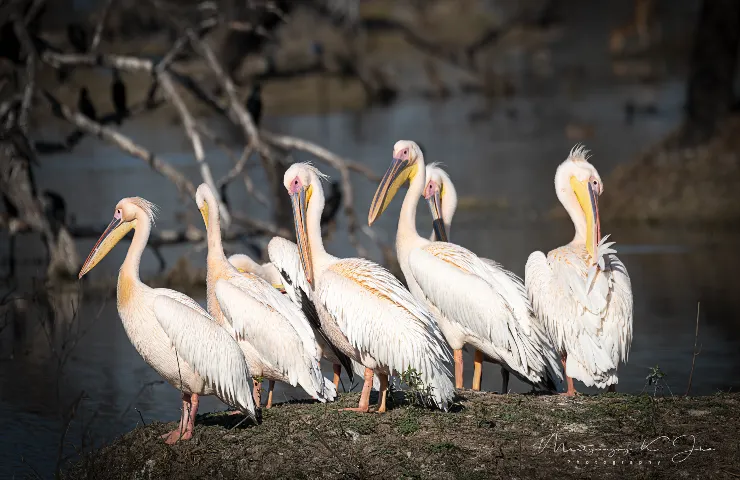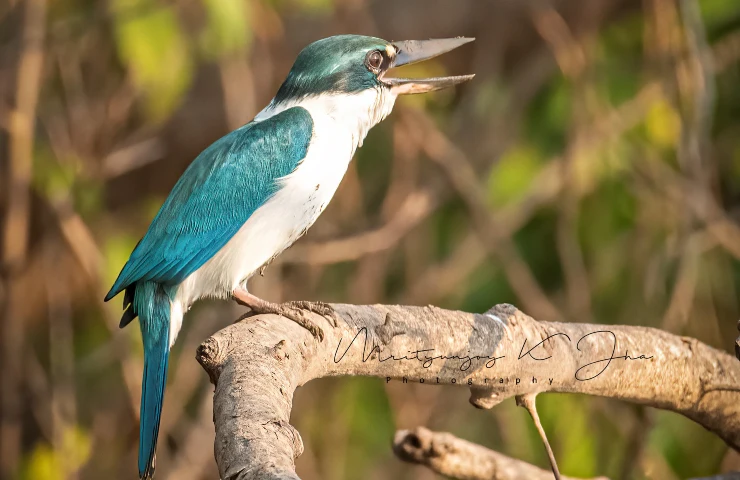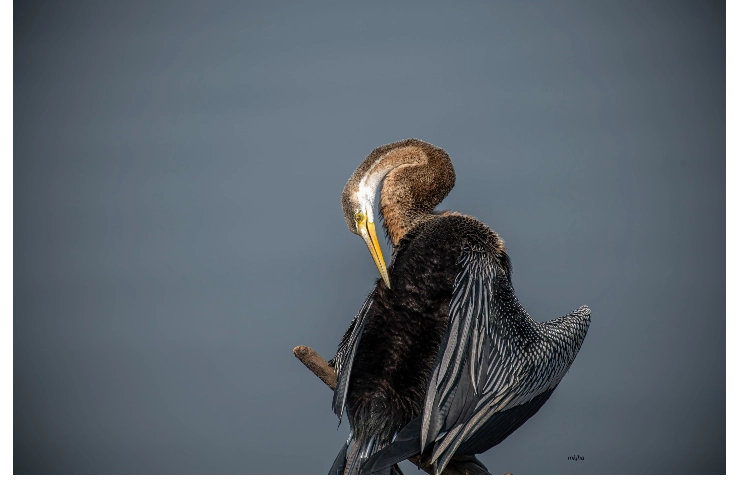We were back again in Keoladeo bird sanctuary in Bharatpur, Rajasthan – this time for the Great White Pelicans. Our guide had informed us that this time hundreds of Pelicans have landed in the sanctuary, this time after a gap of three years.
“Come fast, otherwise they would fly away,” the guide told us. For the last few years, we had seen only a few of Pelicans in the sanctuary and that too from a long distance.

But this time Keoladev was full of white winged guests who had landed here covering thousands of kilometers from somewhere in Europe. According to experts, when great white pelicans migrate from chilled winter to warmer regions of Africa and Asia, they stopover in Israel.
Preferring an overland route to riskier skies above the sea, hundreds of millions of birds pass through Israel each migration season – in spring on their way north to Europe and Asia and later in the year back to Africa. The Israeli government put about 2.5 tonnes of second-rate fish into a designated pond in Mishmar Hasharon, a communal kibbutz near Israel's Mediterranean coast where the pelicans are welcome to feast.
Watch Video : The incredible video clip has captured 50,000 pelicans stopping over Israel shared by Reuters
WATCH: Israel is creating feeding ponds for migrating pelicans https://t.co/SBjOy5pBnD pic.twitter.com/7oj3KslNQe
— Reuters (@Reuters) November 13, 2021
After having a good meal, one batch of great white pelicans continue their journey towards India flying over Pakistan and finally settling down in shallow, freshwater lakes with plenty of fish in the Northern part of India including Keoladeo Birds Sanctuary in Bharatpur.

At first we thought the birds had eluded us, then suddenly they started landing in a nearby pond and within a few minutes there were hundreds of them forming an impromptu long chain and sailing leisurely in the pond.
The flight of the pelican is a sight to behold. The bird’s large wing surface area allows it to make a few flaps and then glide for several hundred yards. When in a flock they usually fly in single file or in a v-formation. It is quite fascinating to see them take off from the pond. Facing the wind, the leader will begin to flap its enormous wings. Its webbed pink feet would paddle furiously, and it would flap and splash rapidly and finally, it would lift off and rise with majestic dignity before banking and gaining height, its head laid back in a flat Z against its back. Soon others follow the same.
Weighing up to 10 kg, their overall length is often between four to six feet and with about 10-12 foot wingspan. White pelicans are therefore one of the largest birds and in spite of their huge size, they sit high on the water because their bones are full of air and they have large air sacs in their body. Because of this they cannot dive underwater.

A special feature of these white pelicans, besides their enormous pink and yellow bills and vibrant white feathers, is their "strategic and elegant" hunting habits.
Unlike other species of pelicans that dive for their food from great heights, the white pelican scoops small fish up into its pouch while swimming. The pelican dips its beak, which allows the water to drain out of the pouch. It then tips its bill upward and swallows the fish.
How they actually catch their fish is what makes the birds so fascinating. A flock of 6-12 pelicans gather in a horseshoe formation in water to feed together. They surround a school of baitfish and by flapping their wings on the surface, herd the fish into shallow water where the pelicans scoop them up.
The large, fibrous skin pouch that dangles from a pelican's bill is called the gular pouch. Many people mistakenly believe it’s used to store food, like a built-in lunch box. The idea was popularized by a limerick by Dixon Lanier Merritt in 1910.
“A wonderful bird is the pelican.
His beak can hold more than his belly can.
He can hold it in his beak for a week.
But I’ll be damned if I can see how the helican."
Of the eight species found worldwide (on nearly every continent), three are found in India: the great white aka rosy pelican (Pelecanus onocrotalus), the spot-billed (or grey pelican, Pelecanus philippensis) and the Dalmatian pelican (Pelecanus crispus).
Over the years, the population of pelicans has been decreasing due to several factors like habitat destruction, environmental pollution, human persecution, etc.
Also Read: Oriental Darter–the graceful diver of Bharatpur that catches fish without a splash
















